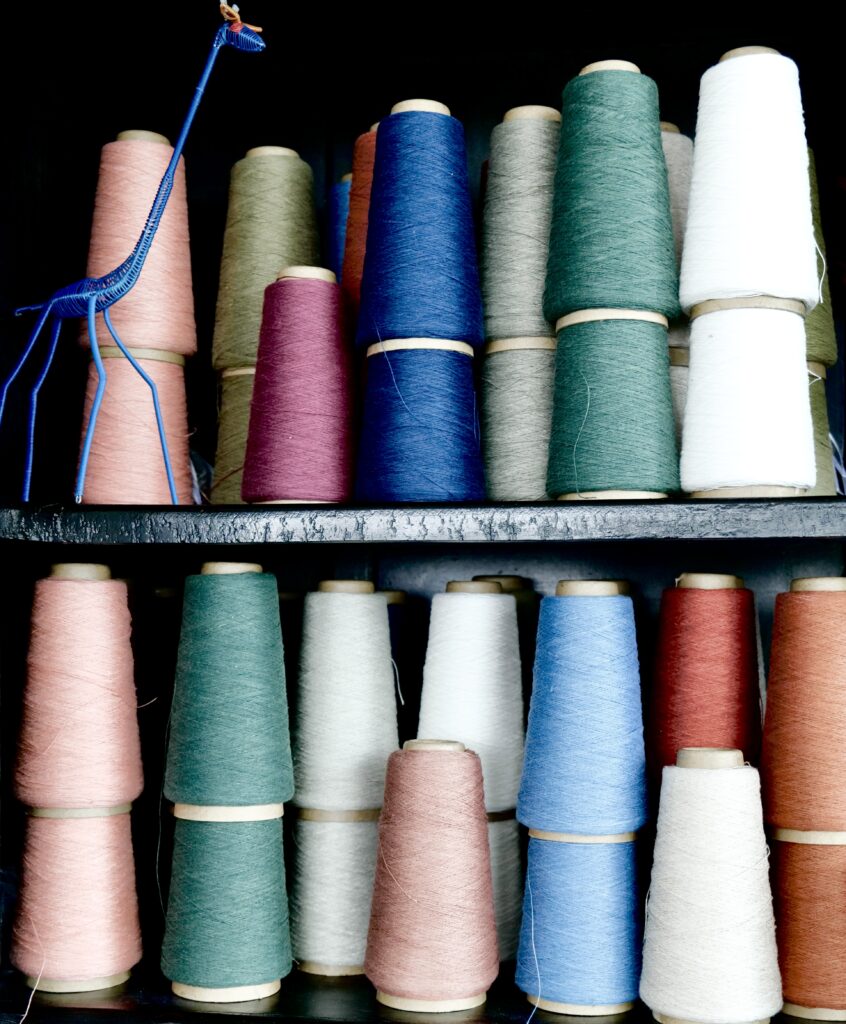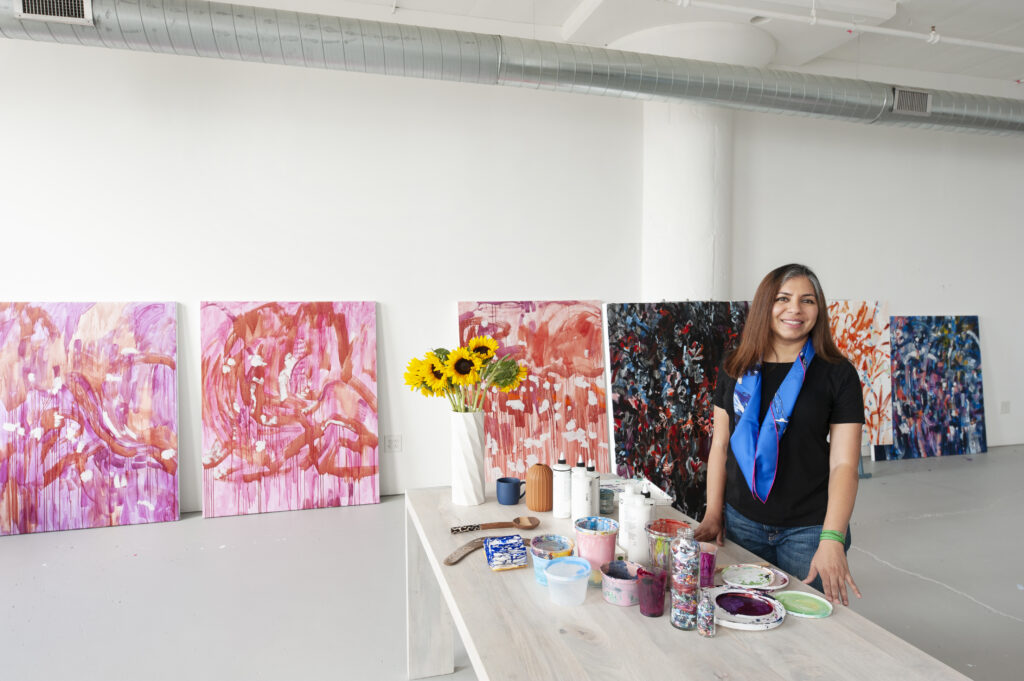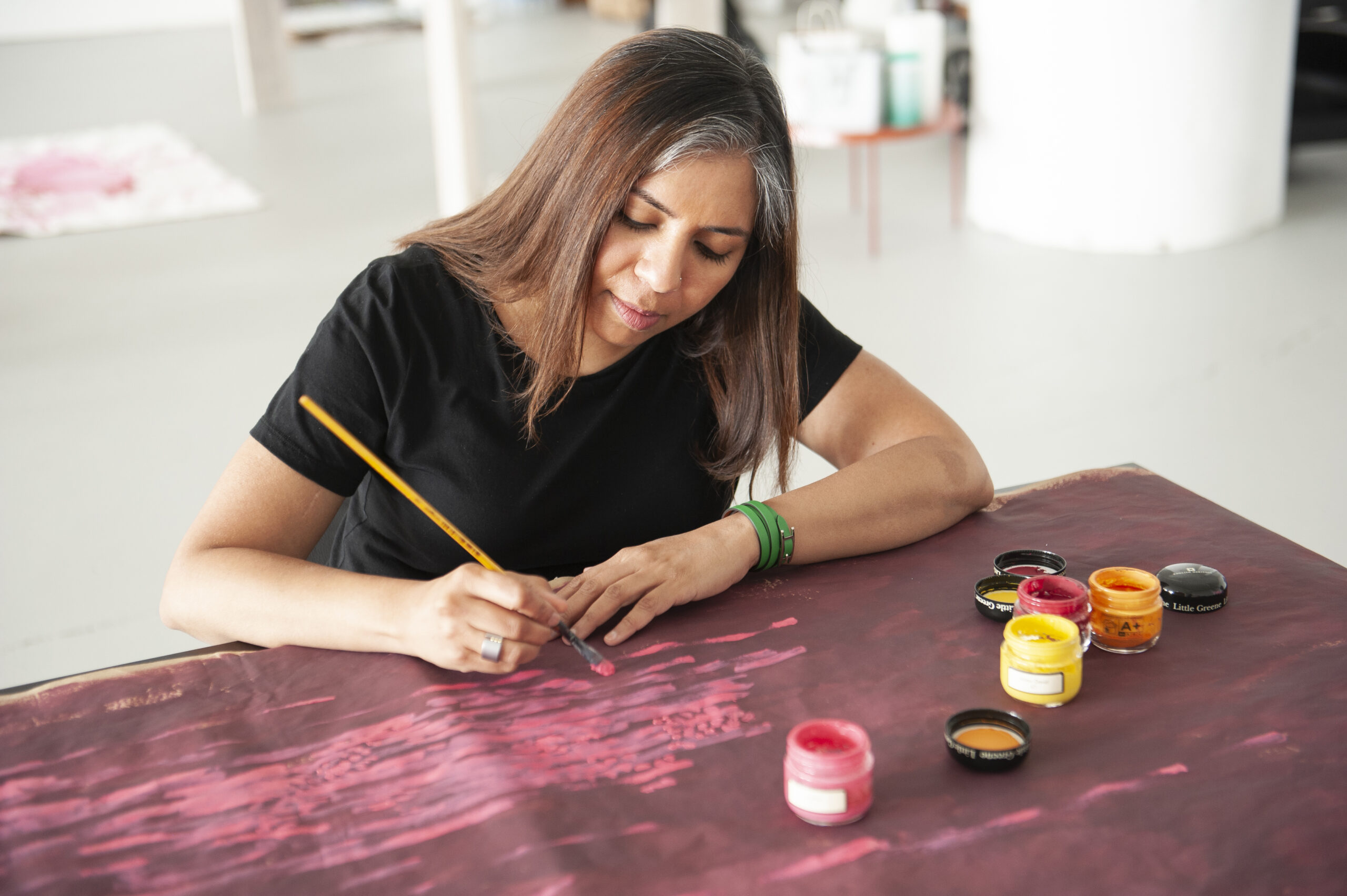When Pooja Pittie moved to the U.S. in 1999 from India, she didn’t set out to be an artist, but unbeknownst to her at the time, she was already absorbing sights and impressions that would lead to a full-time creative practice—and help her to navigate a life-changing diagnosis.
Growing up in Mumbai, elements of what would later inform Pittie’s artmaking were taking shape. “I spent summers in Jodhpur, Rajasthan, where my family is from,” she says. “Bright colors, the cacophony of the city, and the neutral sands of the desert are all part of my visual language.” She was always drawing, teaching herself by copying cartoons from the newspaper—she loved Mario Miranda’s illustrations—and portraits from fashion magazines.
A Life-Altering Direction
Landing in Chicago, she pursued an entrepreneurial career in finance. A year later, she was diagnosed with Limb-Gurdle Muscular Dystrophy, or LGMD. The rare, progressive condition has no cure and is characterized by the gradual loss of function in the arm and leg muscles. At the time, she didn’t have any symptoms, but a blood test detected an anomaly. Abstract at first, the diagnosis eventually led to a change in energy levels and physical capabilities. She began to nurture a painting hobby during those years as a way to find balance.
The artist is very open about her health journey, and her clarity and drive is a model for others. “Progression (of LGMD) is not linear, so it’s challenging to predict and plan for,” Pittie says, sharing that she constantly has to adapt to new physical cues. As the effects of the condition became more prevalent, she began to reevaluate her priorities in life and decided to focus on art-making as a full-time pursuit, heeding her body’s fluctuating energy and abilities.






Color is a starting point for anything Pittie creates, from temperature and saturation to its psychological significance. “The emotional effect of color, for me, feels elusive,” she says. “Red is not always energizing; blue is not always calming.” Her vibrant, abstract paintings focus on patterns, gestures, and the fluidity of the medium itself, expressing the artist’s emotions and experiences while anticipating that viewers will bring a wide range of their own responses. “Ultimately, I like the idea of using color to harmonize but also disrupt.”
Pittie also creates mixed-media fiber works, stitching across paintings or adding an intricate knitted layer over a pigmented surface. The textiles often link her to family, like old cloth from her mother, grandmother, or aunts, or materials from artisanal collectives in India with ancestral histories of weaving and dyeing.

A Holistic Approach
Pittie also explores the theory of the “bodymind,” a philosophy that resists body-mind dualism and rather emphasizes their interconnection as a single, holistic entity. The term was coined by scholar Margaret Price, who directs the Disabilities Study Program at The Ohio State University.
Pittie ran across the term in the context of disability culture in 2020 when she was a 3Arts Fellow at University of Illinois at Chicago. “Expressing the bodymind is what I’m interested in through my artistic practice, both painting and working with fiber,” the artist says. She emphasizes trying to stay “authentic” to the abilities of the bodymind, grappling with the sometimes contradictory ideas around energy and rest or the physical and the mental.
After moving from India and before landing in Chicago, Pittie lived in Cincinnati, Louisville, and Columbus, so her experience in the U.S. is inextricably linked to the Midwest. “I believe that Chicago made it possible for me to become an artist and find my voice,” Pittie says. The 3Arts Residency, for example, provides customized support for artists with different abilities, enabling the creation of new work, professional development, and advocacy for disability arts and culture.
“Especially the last few months, as I dealt with a worsening of my condition and lifestyle changes, I have realized I need to work with what is known—what I have—and leave room for the unknown—what I will lose—and trust that it will be beautiful,” Pittie says. “The unknown has brought me great joy and purpose along with challenges and losses in my life so far. I have to believe that it will continue to be magical and beyond my wildest dreams or plans.”
